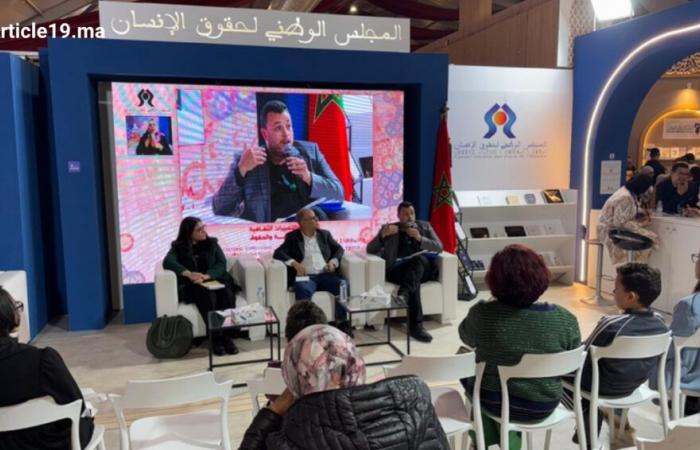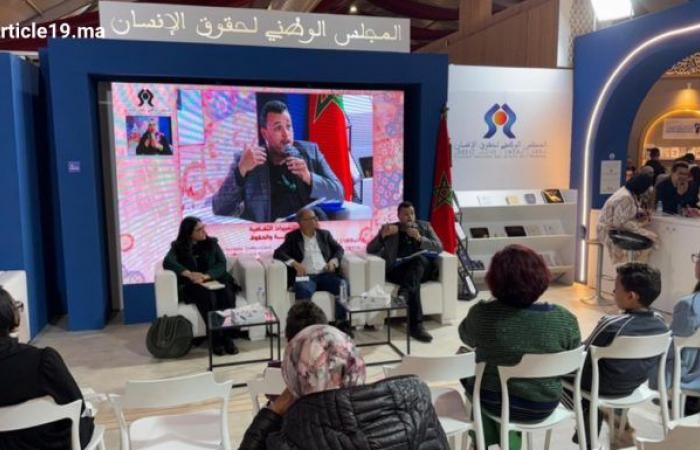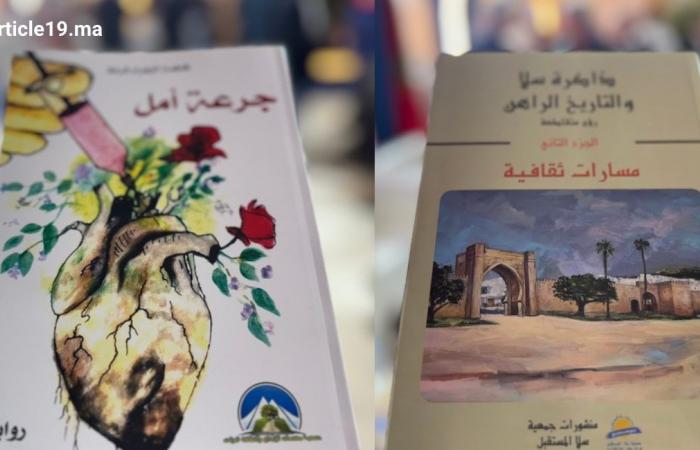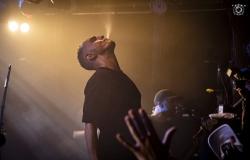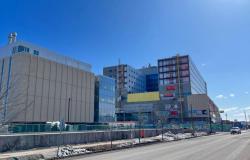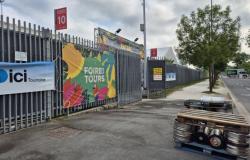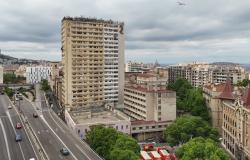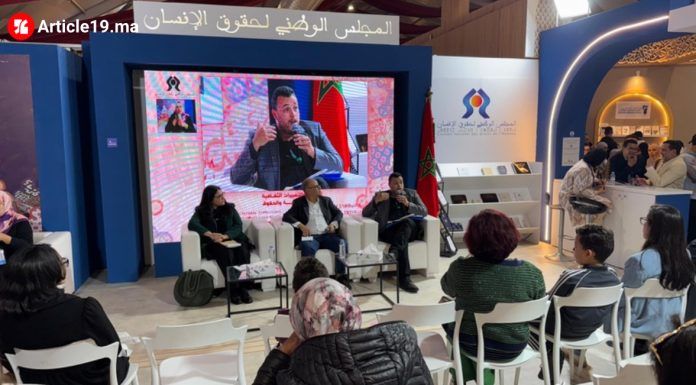
The stand of the National Council for Human rights (CNDH) welcomed this Sunday, on the 3rd day of the International Edition and Book fair (Siel) in Rabat, a conference entitled “Cultural diversity, a fundamental human right”, with the participation of academic and associative figures, in particular Yassine Akhiat, president of the Ibrahim Akhiat Foundation, and Hanan Hammouda sociology and anthropology. The meeting was moderate by university professor El Hussein Bouyaakoubi.
The conference began with a definitional approach to the concept of “cultural diversity”. Yassine Akhiat explained that diversity is not only the tolerance of the other, but above all self -acceptance. He insisted on the need for sincere cohabitation and the abandonment of double discourse, which he described as “societal schizophrenia”, especially in matters of education and media.

Akhiat said that the Amazigh language, as an ancient language and recognized as an official language in the Moroccan Constitution, represents a cultural origin from which other components can emerge. He called to go beyond the folk vision of local cultures and to break with the contradiction between constitutional recognition and the weakness of institutional implementation.
For her part, researcher Hanan Hammouda stressed that cultural diversity is not a new concept, but a basis for sociology and anthropology, which reflects the relationship of human beings with its natural, social and political environment. She added that Morocco has accumulated significant experiences in this area, historically illustrated by the cohabitation of various components, such as the existence of “Mellahs” in the old cities, testifying to the installation of Moroccan Jews for centuries.
The debate also paved the way for questions about the degree of acceptance, by Moroccans, of their own diversity. Akhiat stressed that the interaction with this diversity varies according to the source of discourse-media, public institutions or civil society-calling for the construction of an “identity balance” which reflects the way in which Moroccans perceive themselves.
Hammouda stopped on the importance of investing in local identities as a gentle force, noting that the 2011 Constitution marked a transition from an exclusive recognition of Arabic to a joint recognition of Arabic and Amazigh, reflecting a political will to consolidate diversity.
As for the concrete implementation, Akhiat raised the question of the fate of the budgets allocated to Amazigh culture, criticizing the absence of clear objectives. He said: “We have a billion budget, but we don’t know where he’s going, and there is no clear government sectoral management. »»
At the end of the conference, Yassine Akhiat concluded:
“What we need today is a real questioning of the Moroccan experience of cultural diversity, and the search for more efficient and sustainable mechanisms, with a participatory methodology that strengthens the achievements and prepares the future. »»
+ Mustapha Zem revives the memory of immigration to his novel
“The lost steps” +
At the pavilion “Espace de l’Ecritique et des Rights Human”, the CNDH organized a literary meeting with the Franco-Moroccan writer Mustapha Zem, who presented his first novel “Les Pas Perdus”, published by Parisian editions JC Lattès.
This novel, of the autobiographical type, reconstructs the family’s family memory, focusing on the experience of workers’ immigration in France during the 1970s. In this context, Zem describes itself as a “memory reservoir”, carrying the details of the daily life of his parents, and archiving their suffering and their sacrifices through his own voice, that of a child born in France but which has never broken with its Moroccan roots.
He recounts his life in France at that time, from Parisian suburbs, including slums, social housing (HLM), to the organized urban neighborhoods. An experience that sums up the features of an entire generation of sons and daughters of immigrants.
In a declaration to the participants, Zem said:
“The novel” Les Pas lost “tells the story of a child born in France in an immigrant Moroccan family, retracing his life since the 1970s until today. Through his gaze, I explore the formation of identity crossed by two cultures – French and Moroccan – sometimes in harmony, sometimes in tension. »»
And he added:
“The novel seeks to make a unique voice heard, to question what it means to be Moroccan in France – in the eyes of the French – and French of Moroccan origin – in the eyes of Moroccans. This tension between the two memberships, I wanted it to be sincere, mixed with irony, innocence, nostalgia … and sometimes gravity, when the moment requires it. »»
This novel also constitutes a literary testimony on immigration as a timeless human cause, and highlights how collective memory remains alive in the details of the neighborhoods, the accents, the memories of grandparents, and in moments of doubt and double belonging.
-
+ The visual artist Leïla Ben Halima presents his artistic experience at the CNDH + pavilion
As part of the section “Espace des expressions artistic and creative”, the pavilion of the National Council for Human Rights, within this 30th edition of the Siel, welcomed an artistic meeting with the plastic artist Leïla Ben Halima, who exhibited a selection of her expressive works and shared her reflections on her creative journey.
The artist expressed his joy at participating in this cultural event:
“It is an honor for me to be present at this fair, at the invitation of the CNDH, to participate in a discussion that I consider essential on the role of art and culture as levers of human emancipation. »»
In her intervention, she highlighted her artistic experience, by emphasizing the way in which art can go beyond simple aesthetics to become a tool for transmission of values, opening of debate and collective awareness, in particular on issues of freedom, tolerance, identity, and particularly African belonging.
She added:
“Art, for me, is not only made of colors and forms, it is a means of education, resistance and dialogue. It is a language capable of crossing borders and expressing human concerns, wherever they are. »»
An artistic and human encounter, reflecting the spirit of the fair that links culture and human rights, and highlighting art as a bridge between past and present, while offering the future a more conscious and inclusive vision.
+ New publications: Salé memory and childhood pain +
As part of the “New Publications” space, the CNDH organized a debate highlighting two new works: one retracing the historical memory of the city of Salé, and the other, a social novel expressing the cry of a generation.
The debate began with the collective work “Memory of Salé and Contemporary History: Crossed Regards”, directed by Professor Abdeljalil Nadem, one of the eminent specialists in the history of the city of Salé. The book, described by its author as an “open project”, is part of a double context: the 20th anniversary of the recommendations of the equity and reconciliation body, and that of the “Salé du Futur” project.
Nadem said that “Morocco, with each historic turning point, needs to summon its memory”.
He considers that work on archives and historical data is the only way to build the future. He presented some statistics from the book, including the presence of more than 50 doctors and pharmacists, 20 journalists, and 18 artists in the Encylopedia of the Salé elite.
Nadem has also underlined an almost age between male and female participation, reflecting an ancient awareness of shared cultural and social participation.
He also mentioned the literary wealth of Salé, from theater to poetry, by recalling figures such as Haj Maâninou, Mohamed Jem, Abdellah Chakroun, and Abdelmajid Fennich, considered as full -fledged schools of the Salean artistic expression.
The second part of the meeting was devoted to the social novel “A dose of hope”, signed by the young pupil and budding novelist.

By Boutaina Taki
Article19.ma

